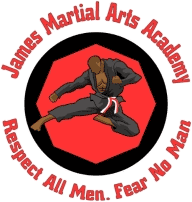Kajukenbo or Gracie Jiu-Jitsu

Introduction
When looking for a martial arts classes in San Diego for personal development, there are several factors to consider before making a decision. Although MMA and BJJ are popular today, they may not be the best option in every situation if there is the potential of multiple attackers – you don’t want to find yourself on the ground while one attacker is subdued, only to have their friends coming at you with punches or kicks.
That’s why Kajukenbo and Kosho-Ryu martial arts classes are such an attractive option. They teach self defense against all types of weapons, from guns and clubs to even knives. They also focus more on precision strikes and devastasting takedowns than Gracie Jiu-Jitsu does. Additionally, Kajukenbo and Kosho-Ryu offer more specialized forms of attack that do not rely solely on ground fighting techniques like Brazilian Jiu-Jitsu does – techniques that could be helpful against multiple attackers which can come at you from all angles.
Background of the two arts
Kajukenbo and Gracie Jiu-Jitsu are both popular martial arts schools program today, with many people drawn to them for their different approaches to self-defense. While Gracie Jiu-Jitsu is a ground fighting system that focuses on submissions and Brazilian Jui-Jitsu techniques, Kajukenbo school seeks to prepare its practitioners for multiple potential attackers by teaching them a comprehensive range of techniques involving striking, joint manipulation, throws, and grapples defense skills.
In addition, while Gracie Jiu-Jitsu teaches you how to defend yourself effectively against an unarmed attacker, Kajukenbo teaches how to protect yourself with weapons such as guns, clubs or knives. Therefore, if you are looking for an effective way to defend yourself in a potentially dangerous situation then Kajukenbo may be the right choice for you.
That’s why Kajukenbo and Kosho-Ryu are such an attractive option. They teach self defense against all types of weapons, from guns and clubs to even knives. They also focus more on precision strikes and devastasting takedowns than Gracie Jiu-Jitsu does. Additionally, Kajukenbo and Kosho-Ryu offer more specialized forms of attack that do not rely solely on ground fighting techniques like Brazilian Jiu-Jitsu does – techniques that could be helpful against multiple attackers which can come at you from all angles.
Battle of the Arts
In recent years, a South American martial art known as Gracie jiu-jitsu has taken North America’s martial arts community by storm. Many martial artists have embraced this highly effective Brazilian system and have realized the ground-fighting limitations of their styles.
For the last 15 years, he has trained directly under the founder of Kajukenbo, Adriano D. Emperado. He has produced over 30 training videos on Kajukenbo and has conducted Kajukenbo seminars worldwide.
Allyson Gracie teaches Gracie jiu-jitsu in Corona Del Mar, Ca. At the age of 4, he started his training under his father, Carlos Gracie, the founder of Gracie Jiu-Jitsu. By age 14, he was teaching for his father in the original Gracie Jiu-Jitsu Academy. By age 18, he was a black belt & UFC with his students. At age 50, he is the highest-ranking practitioner (8th degree Grand Master) of Gracie Jiu-Jitsu in the United States.
Kajukenbo
These five men of vision were Peter Choo, the Hawaii welterweight boxing champion, and a Tang Soo Do black belt. Frank Ordonez, a Sekeino Jujitsu black belt. Joe Holck, a Kodokan Judo black belt ranking. Clarence Chang, a master of Sil-lum Pai kung fu. And Adriano D. Emperado, a Chinese Kenpo black belt and Escrima master.
Together, these men trained for several hours each day, taking advantage of each other’s strengths and weaknesses to develop their new art. When Joe Holck and Peter Choo would spar, Holck could see his weaknesses in striking techniques, and Choo would realize his vulnerability once he was on the ground. Choo was able to show Choo how a Kenpo man could work inside a kicker with rapid-fire hand techniques.
Chang, in turn, showed the others how the circular, flowing techniques of Sil-lum Pai were used to evade and strike. And Frank Ordonez showed everyone how to go with an attacker’s force and then re-direct it against him with painful locks and throws.
After it was decided that Kenpo would be the basis to build on, it was a long three-year process incorporating the tang soo do kicks, jujitsu joint locks, judo throws, and sil-lum pai circular techniques into a complete system. Now all the system needed was a name. Joe Holck suggested that the name be “Kajukenbo,” ka for karate, Ju for judo and jujitsu, ken for Kenpo, and bo for Chinese boxing (kung fu).
When Kajukenbo was founded, people no longer needed battlefield training. Warriors on horseback, armed with swords and spears, had been replaced by street thugs armed with knives and clubs. Kajukenbo was specifically developed with this in mind. Like most karate systems, Kajukenbo has katas, or forms.
These 14 katas are known as “Palama Sets” 1 through 14. (These katas were formerly known as Pinans. Forbach explains that in February of 1993, Professor Adriano D. Emperado renamed the katas to show their origin, the Palama Settlement of Honolulu, Hawaii.) Although the Palama sets provide the Kajukenbo stylist with many street-effective techniques, Kajukenbo‘s strength lies in its self-defense techniques. Like traditional systems, Kajukenbo takes many self-defense techniques from its katas.
These self-defense techniques are arranged and categorized into 15 grab arts, 21 punch counters, 15 knife counters, 15 club counters, nine two-person attack counters, and 26 advanced alphabet techniques.
By combining Tang Soo Do, Judo, Jujitsu, Kenpo, and Kung Fu techniques, the Kajukenbo stylist can defend himself in many ways. He can use soft circular kung fu techniques to evade and strike. Or he can use judo or jujitsu to throw an attacker to the ground. Forbach feels that the strength of Kajukenbo is in how these techniques are combined.
Unlike some traditional systems, Kajukenbo relies heavily on combination techniques. For example, if the attacker punches, the Kajukenbo stylist may step into the attack at a 45-degree angle while blocking with a soft palm block. He would then counterattack with several rapid-fire Kenpo hand strikes followed by a judo foot sweep. Once on the ground, the attacker could be struck again or controlled with a jujitsu lock.
These combination techniques are arranged so that each technique will set up the next by following the reaction of the attacker’s body. Although some martial artists may describe this as overkill, Forbach feels that an attacker may not be stopped by one strongly focused blow. Therefore, the theory behind Kajukenbo is that it is better to counter with a multitude of techniques that can be ended when the threat no longer exists than to rely on one technique and find that it is not enough.
Gracie Jiu-Jitsu
The development of Gracie J-
martial arts classes
Jiu jitsu started more than 65 years ago. Brazil in the early 1900s was an immigrant country. Like George Gracie, who had immigrated from Scotland, many Japanese people immigrated to Brazil. Brazil is said to have the largest Japanese population outside of Japan.
According to Reylson Gracie’s grandfather, Gastao Gracie played a significant role in assisting Japanese immigrants in establishing a community in Brazil. At that time, Gastao met a man named Mitsuo Maeda Koma. At the time, Koma was recognized as the world champion of jiu-jitsu.
Because of Koma’s jiu-jitsu exploits, he was awarded a government position by then Crown Prince Hirohito. This position put Koma in charge of overseeing Japanese immigration into Brazil.
Before long, Gastao and Maeda formed a strong friendship. As a favor, Maeda started to teach jiu-jitsu to his friend’s son Carlos. This was in about 1918. When teaching Carlos jiu-jitsu, Maeda always impressed upon him the importance of keeping his knowledge secret because non-Japanese were never taught jiu-jitsu. Carlos was given the provision that he was only to teach it to family members and not the public. Carlos kept this agreement until Maeda’s death released him from it.
Before he started to teach the public, Carlos taught jiu-jitsu to his brothers. When asked about the statements made in print that Helio Gracie was the founder of Gracie Jiu-jitsu, Reylson had a simple answer. “Helio was the youngest of my father’s four brothers. My father started training in jiu-jitsu when Helio was only six years old. Some of the Gracies have indeed added some of their innovations to their teachings, but my father was the one who founded Gracie jiu-jitsu.
Carlos Gracie had four brothers who were black belt ranking under him and ten sons who he trained to black belt & UFC level. Besides his brothers and sons, there are grandsons, nephews, and grand nephews, who carry on the Gracie tradition.
He was also the first man to teach jiu-jitsu in Brazil. “ The central organization for Gracie jiu-jitsu is the Federation of Jiu-Jitsu de Rio, headquartered in Rio de Janeiro, Brazil.
The Techniques of Gracie Jiu-Jitsu
Although jiu-jitsu generally employs striking, kicking, throwing, and ground fighting, the strong point of most jiu-jitsu systems is their joint locking techniques. Gracie jiu-jitsu uses all the techniques mentioned above, plus techniques borrowed from boxing, karate, and many other fighting systems.
According to Nelson, the Gracies have always looked at different fighting systems to see what they have. If they see something that they like, they use it.
Traditionally, Gracie jiu-jitsu is taught only in private groups of three students. The number three is used so that the students can train with a partner as the instructor works with each student. Beginning students go through a course of thirty-six one-hour private lessons. In those thirty-six hours, the student learns about three hundred techniques.
When asked if three hundred techniques were too much to cover in just thirty-six hours, Reylson explained it this way. “Three hundred techniques is not too much to learn in thirty-six hours of private instruction.” Since many people will not devote a long period to martial arts training, what I want to accomplish in these first thirty-six hours is to give them an excellent self-defense course.
I want them to be able to defend themselves in most situations. At first, we don’t spend a lot of time on the fine points of jiu-jitsu. We get down to pure self-defense. All I need to do is to teach students how to react intuitively. You don’t have to be perfect to escape danger. You only need to have the right idea.
When it only takes you three seconds to make the right move in a fight, thirty-six hours with me is more than enough time to learn practical self-defense. “ Nelson firmly believes that the study of Gracie jiu-jitsu is a lifelong journey like other martial arts. After a student completes his first thirty-six-hour course, he can discontinue his training or continue with his private instruction. There are over one thousand techniques in the Gracie system.
In Conclusion
if you’re looking for a comprehensive martial arts system that will teach you how to defend yourself against multiple attackers in a wide range of scenarios and keeps self-defense in mind, then Kajukenbo and Kosho-Ryu are perfect options.
They cover all aspects of self-defense, from ground fighting to combat with guns, clubs, or knives. Not only that, they also stress the importance of situational awareness and the ‘plus one factor’, so you know how to stay safe and act decisively when things get heated.
All in all, Kajukenbo and Kosho-Ryu offer an effective system of self-defense that has been proven over time – it allows you to protect yourself no matter what situation arises.
